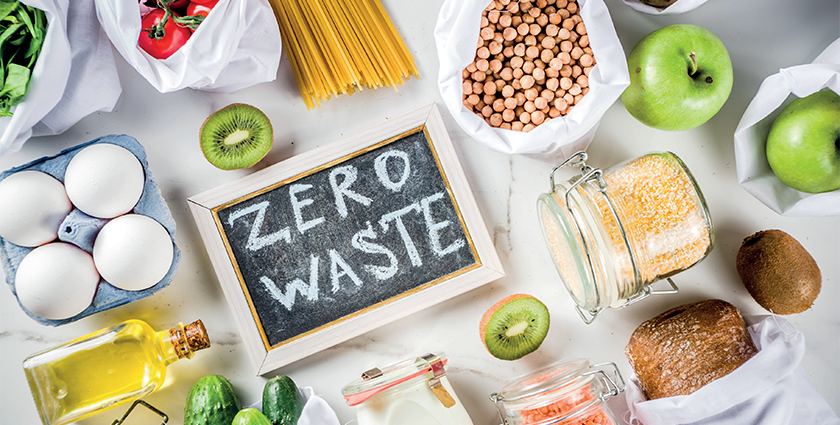
The race is on
Concerns around the sheer volume of food waste produced every year are growing, and with over 89 million tons thrown out every year in Europe, the situation is expected to worsen if action isn’t taken now. Similarly, as natural resources continue to deplete, and with a growing population, the world is almost at breaking point when it comes to food waste. It has been recognized by the United Nations as a global issue, impacting both the planet and the economy.
If we look at the sector specific data, retail is responsible for 13 percent of global food waste, with grocery responsible for five percent because of perishable items. So, what is the solution for supermarkets looking to overcome the issue of surplus food? In this article, I explore the role that innovation and technology have to play in the drive to reduce food waste, as well as how optimizing operations can help combat this growing problem.
Harnessing the power of data
Supermarkets are uniquely placed in terms of data collection, as they are one of few retailers who collect large amounts of data from their customers. Their data libraries span eCommerce, loyalty programs, vendors and in-store payments. However, more often than not, supermarkets are not adequately interpreting or harnessing the power of their customer data. In turn, this can result in them missing out on key intelligence that can contribute to business growth – but what does this mean for food waste? Well, if grocers combine their customer data with data analytics and forecasting tools, they can predict demand, spot patterns in food waste and ensure they order the exact amounts of food needed.
And we’re seeing examples of this across the world. Supermarket giant, Walmart, has been experimenting with data analytics and using it to inform inventory and product availability. The artificial intelligence (AI) solution has been designed to recognize which products are missing, differentiate between products and quantities, and determine if they are in high demand. As well as improving efficiency and customer experience, all of these insights are crucial in contributing to a reduction in food waste. If supermarkets can now anticipate what consumers want, they can prevent over-ordering items that are likely to go to waste.
Another simple way that supermarkets can reduce the amount of waste they produce is by embracing imperfect produce. Data from WWF International revealed that up to 15 percent of food produced is lost before it leaves the farm, because of the demand for goods to meet certain, often unrealistic aesthetic requirements and because grocers often ask farmers for more produce than needed to ensure that they can meet the agreed quantities. In response, we’re seeing disruptive start-ups such as OddBox compete with traditional grocers by offering produce that is otherwise deemed imperfect by supermarkets. Not only does this help tackle the food waste issue, it’s also significantly cheaper for consumers.
Optimizing operational processes
Over the past couple of years, grocers have had to rethink their operations, in response to disruption caused by the pandemic and now, the cost-of-living crisis and labor shortages. In fact, a recent study found that the biggest concern for 74 percent of grocery retailers is the tight labor market affecting their investment and operational decisions this year, and increasing competition from online-only retail services that target shoppers’ demand for convenience. As we continue through 2022, we can expect to see additional pressure on supermarkets to modernize current infrastructure and optimize their operations. This optimization can support cost savings as well as waste reduction.
For example, from an eCommerce perspective, supermarkets can use technology to encourage consumers to replace products in their basket with ones that are going out of date. Proactively pushing out products that will perish earlier, for a cheaper price, is not a complex nor difficult task on an eCommerce platform and may well be welcomed with open arms by shoppers worrying about the increasing cost of groceries.
With these changes, grocers can both safeguard their bottom line and pivot their focus towards increasing efficiency and reducing waste. Inventory management is another key area for supermarkets, not only because it ensures consumers aren’t adding products to their virtual baskets that are out of stock, but also to help efficiency within stores and prevent produce from going to waste. However, this is only possible with complete visibility into stock location and levels. By utilizing technologies that enable integrated, unified systems, grocers can ensure that products in their warehouse can be incorporated into the back-end of their website.
Whilst we have seen innovation within grocery fulfilment and last mile optimization, the grocery sector is lagging behind when it comes to innovation in areas other than delivery. With an end-to-end platform, grocers can improve operational efficiency across the entire supply chain, which will set them apart in today’s competitive landscape. Overall, there is much more that can be done within grocery, and data and technology will be the driving forces behind this – particularly when it comes to reducing food waste and optimizing operational processes.
For a list of the sources used in this article, please contact the editor.
Naveo Commerce
Tomas Granö is Grocery expert and CRO at Naveo Commerce, an international end-to-end e-commerce, OMS and Fulfilment technology company helping retailers and wholesalers in all segments to manage and grow their business online. The company was founded in 2020 following the merger of Digital Goodie and Maginus, unifying cloud-based Headless Commerce expertise, Order Management Systems and Fulfilment solutions to establish one of the only companies globally to be able to offer entire end-to-end commerce support to retailers. The company is financially backed by Black Dragon Capital.
For further information, please visit: www.naveocommerce.com